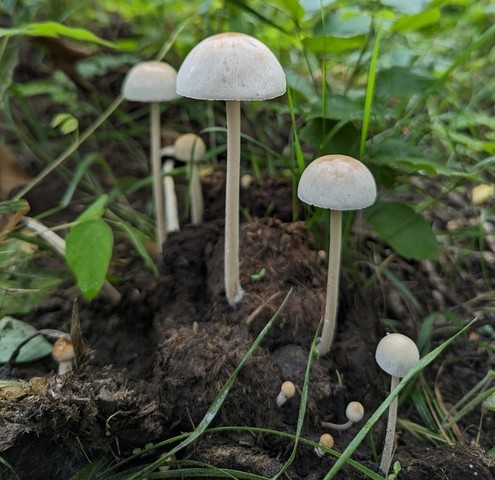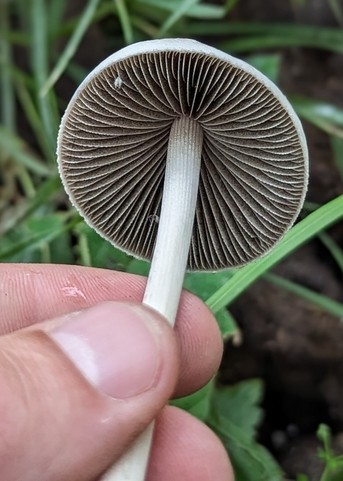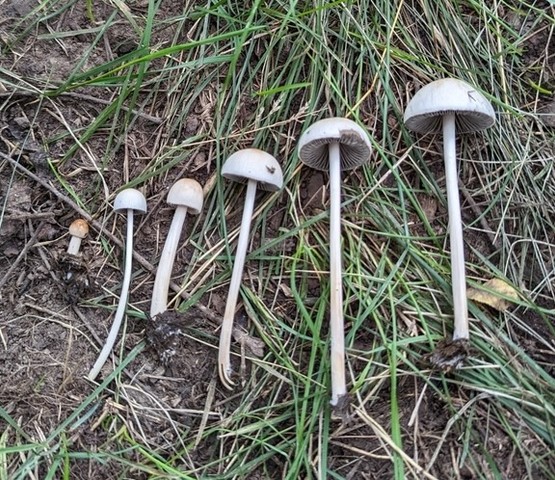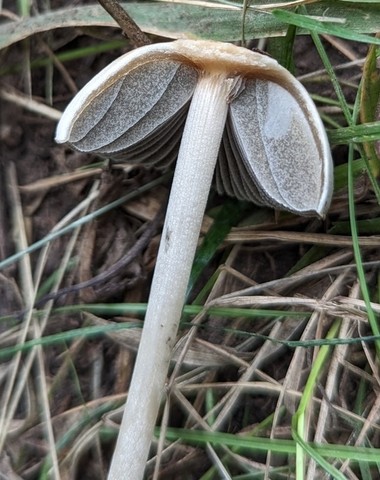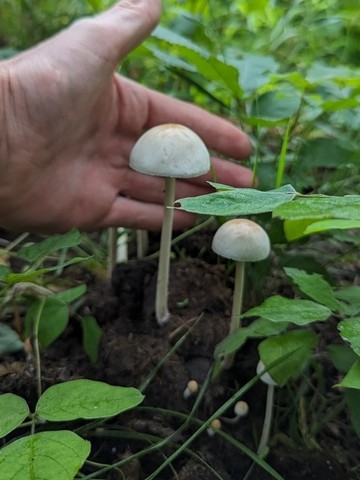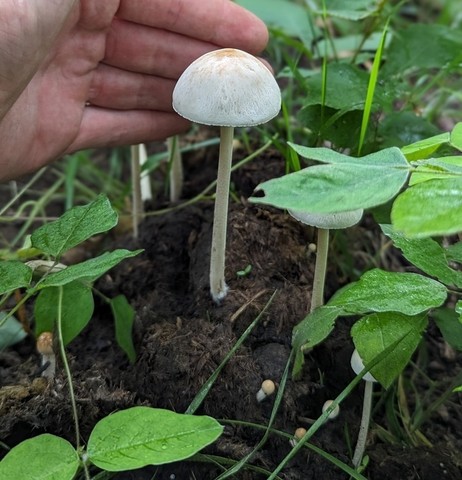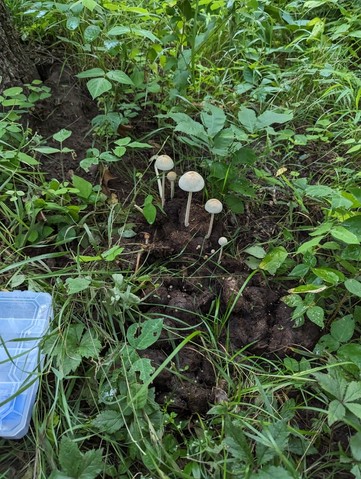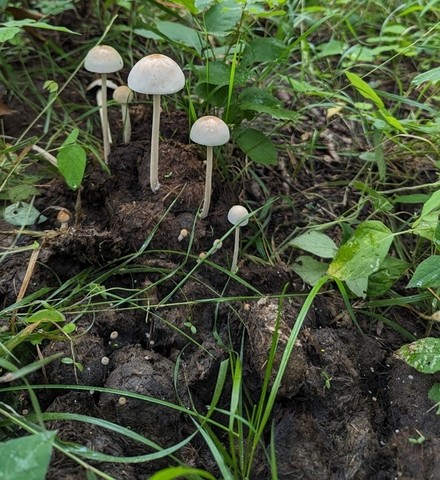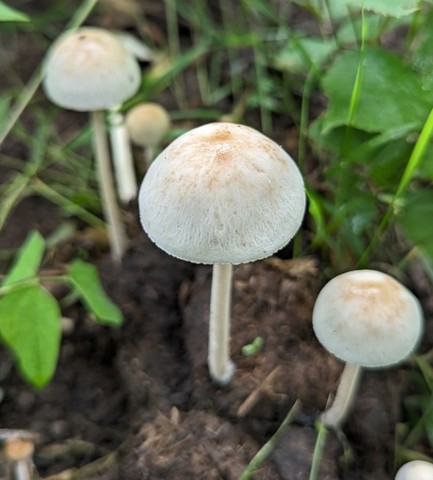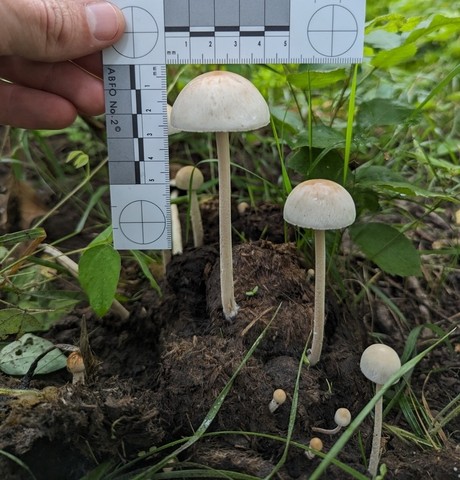Antilles Panaeolus
Panaeolus antillarum
Life > Fungi > Basidiomycota > Agaricomycotina > Agaricomycetes > Agaricomycetidae > Agaricales > Agaricineae > Galeropsidaceae > Panaeolus
The Antilles Panaeolus is a widely distributed dung decomposer that can be found in the spring through fall. It can be found on a wide variety of herbivore dung, from those of horses, cows, buffalo, and elephant to name a few. The name is associated with where it was first described: in the Antilles archipelago bordered by the Caribbean Sea.
The cap is evenly rounded to bullet-shaped to bell-shaped, and colored gray to brown to white. The gills are distinctively "mottled" (two toned speckled, like granite stone), gray when young becoming black with age, and attached to the stem. The spore print is black. The stem has a constant width (even) has no annulus nor a volva.
July 18th, 2023 Field Notes - Indian Cave State Park
- Growing gregariously on horse dung in mixed oak/hickory woodland edge.
- Mature caps slightly tacky with brown blotches near the center, while young caps viscid and more brown overall.
- Gills marginate: white on edges and mottled gray on the faces, serrated, and attached to stem at apex.
- Stipe long and sturdy, bruising lightly brown where handled, no bluing.
- Smell: Not distinctive.
- Taste: Similar to raw button mushrooms.
References
Hallock, R. M. (2019). A Mushroom Word Guide. Independently Published.
Kuo, M. (2007, December). The genus Panaeolus. Retrieved from the MushroomExpert.Com Web site: http://www.mushroomexpert.com/panaeolus.html
Panaeolus antillarum (Fr.) Dennis, Kew Bulletin 15 (1): 124 (1961) [MB#335553]
